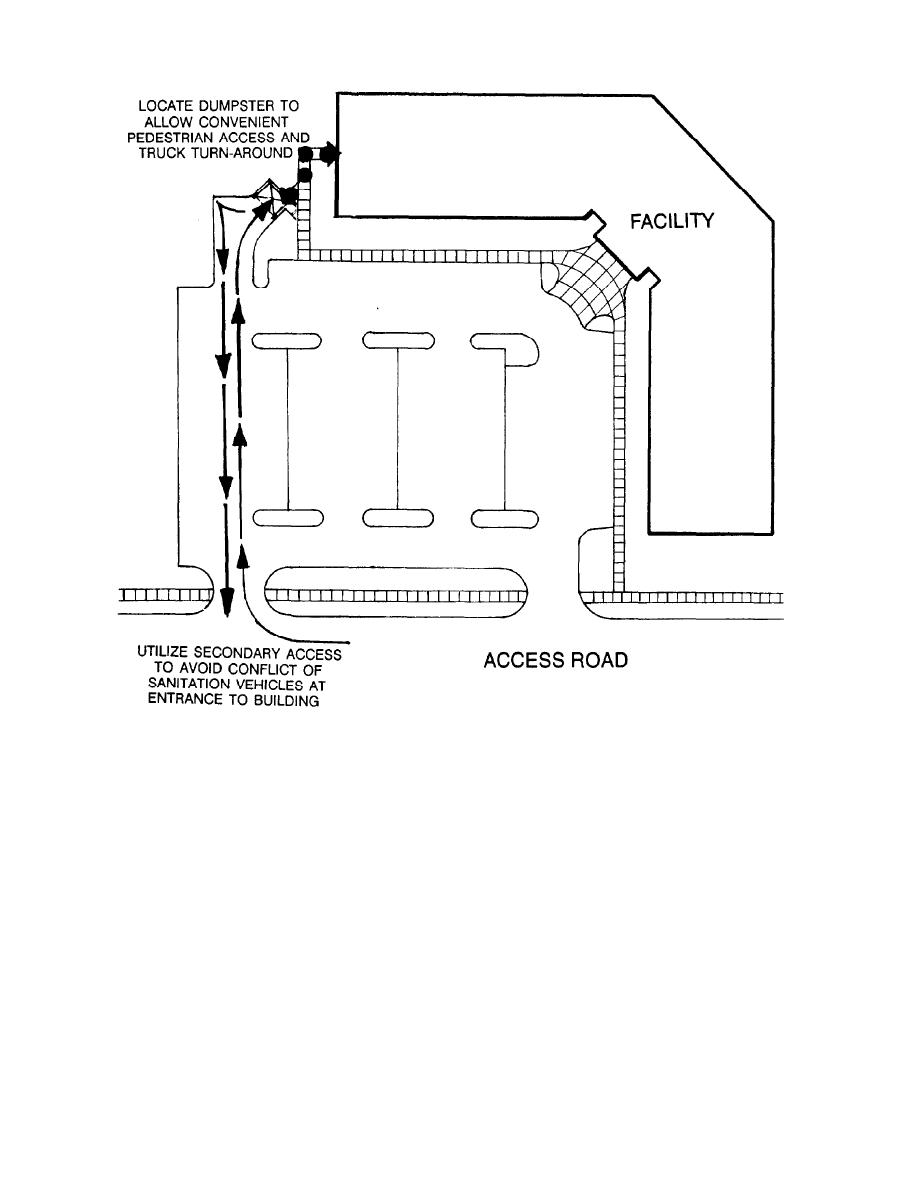
TM 5-803-14
Figure 4-9. Locating a Dumpster Pad.
ably direct access while also providing more com-
most direct route when walking between two
fortable and interesting movement than a grid
points. Desire lines should be weighted to predict
system. Figure 4-11 illustrates alternative side-
the most travelled routes. This prevents crisscross-
walk schemes. Topography and vegetation can be
ing the site with sidewalks. Figure 4-10 illus-
used to reinforce a sense of movement and direct
trates a typical desire line study. Because people
sightlines. Topography and vegetation are less
often cut corners, more generous paved area
successful if used to block movement.
should be provided at pathway intersections. Cor-
(3) Pedestrian Concentration. As the speed of
ners should be rounded or filleted. Where pedestri-
pedestrian movement slows at the points of origin
ans can be expected to enter and exit a building or
and destination, the space required to accommo-
outdoor space from all directions, it is better to
date movement expands. Pedestrian movement is
concentrate on the most direct and important
also interrupted so that people may meet, gather,
routes, accepting that there will be some pedes-
wait or sit. In areas of pedestrian concentration
trian flow across grassed areas. Adequate recep-
(e.g., building entrances, drop-offs and small out-
tion area should be provided at the doorway.
door spaces between buildings), the space should
(2) Grid and Curvilinear Path Systems. A grid
be developed to accommodate these needs. General
path system tends to provide the most direct
design techniques include the following:
access between locations. It is appropriate in areas
(a) Widening walkways at the points of
with a strong sense of architectural definition. A
origin and destination.
more curvilinear path system can provide reason-
4-9



 Previous Page
Previous Page
